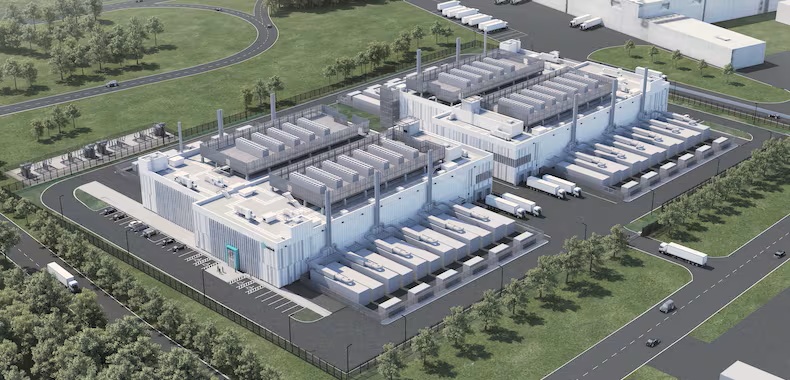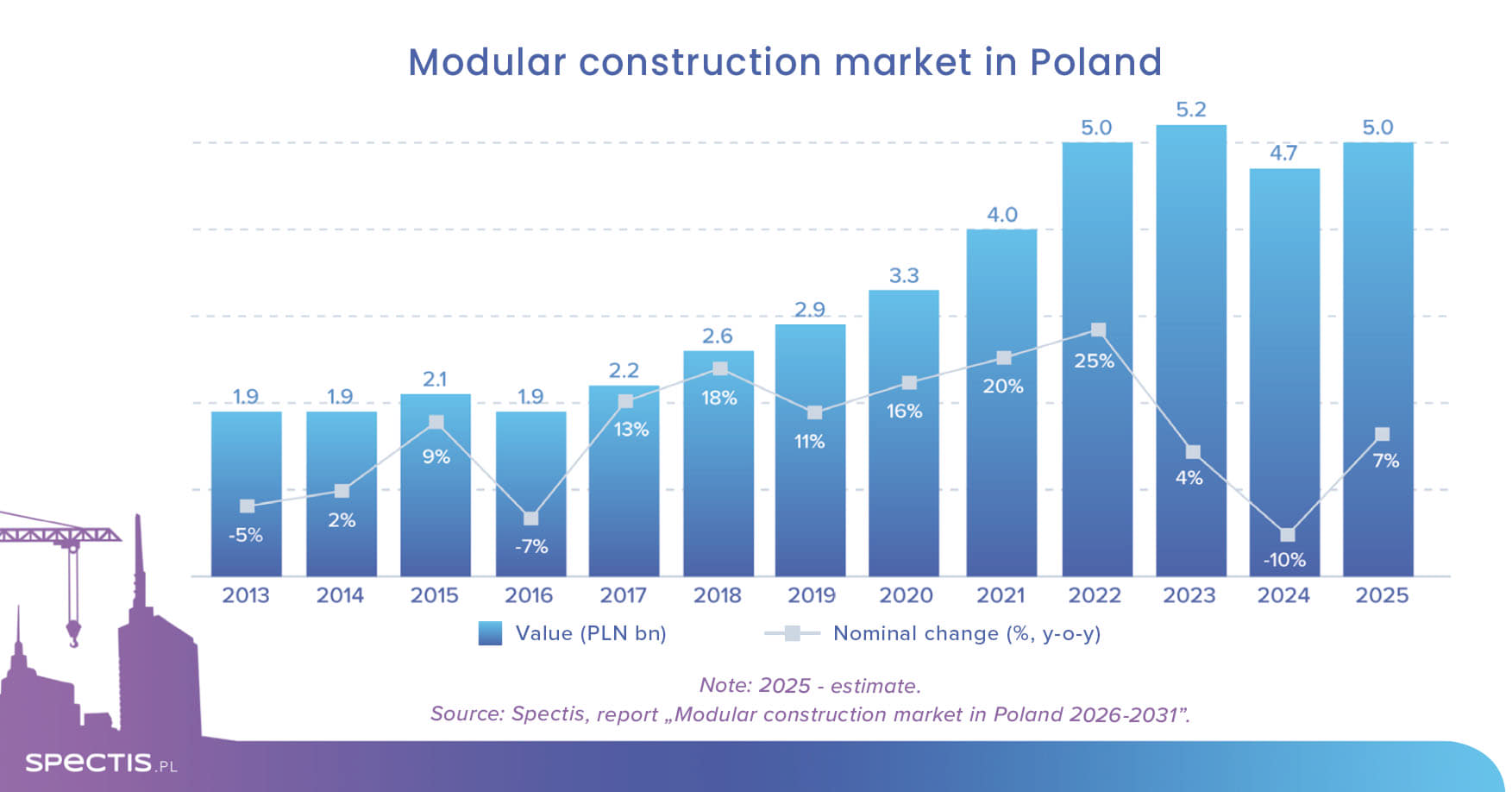The global data center market is experiencing an unprecedented boom, driven by a surge in demand for computing power, the rapid development of artificial intelligence, cloud services, and the accelerating digitalisation of economies. Against this backdrop, Europe is gaining strategic importance, supported by EU policies promoting digital transformation and green energy. Within the region, Poland is emerging as a key hub, attracting infrastructure investors and cloud service providers.
Global data center boom – multibillion-dollar investments
According to the latest Spectis report, "Data center construction market in Poland 2025–2030", the coming years will see a wave of spectacular projects launched by the world’s biggest tech players.
Meta has already invested over $14bn in Scale AI (acquiring a 49% stake) and plans to spend hundreds of billions more to expand its data center campuses across the US and Europe.
Amazon Web Services is expanding its cloud regions in Asia and South America, with $100bn earmarked for future investments. Meanwhile, Microsoft and Google are accelerating their hyperscale developments, including in Central and Eastern Europe.
In 2024 alone, the value of new global data center investments surpassed $200bn, with forecasts pointing to continued robust growth through the end of the decade.
Examples of hyperscale data center projects
Among the largest data center developers is Meta, which began building a hyperscale campus in 2024 in Jeffersonville, Indiana. The 65,000 m² campus is being developed by ACS Group through Turner Construction Company.
Another major facility is the Citadel Campus by Switch, located in Tahoe Reno, Nevada — currently the largest data center in the world (around 120,000 m²). Switch is managing design and construction in-house.

Europe in the spotlight of global tech giants
Europe is fast becoming one of the world's key data center development hotspots, attracting both major tech companies and infrastructure investors. The strongest growth is seen in Germany, Ireland, the Netherlands, and the Nordic countries, where low-cost renewable energy and favourable environmental regulations support hyperscale expansion.
Frankfurt, Dublin, and Amsterdam remain leaders in terms of scale and infrastructure maturity. However, interest in Central and Eastern Europe — especially Poland, the Czech Republic, and Hungary — is on the rise, driven by increasing demand for local computing capacity and competitive costs.
The European Union is actively driving the development of the data center sector through policies supporting digital transformation and clean energy. This encourages companies like Microsoft, Amazon Web Services, and Google Cloud to choose Europe as a preferred location for future investments.

Poland’s growing role in the European data center market
Given the upbeat global outlook, we took a closer look at Poland’s data center construction market - both in terms of ongoing and planned projects, and key development drivers.
Poland’s market is growing rapidly, driven not only by domestic demand but also by the presence of global tech giants. These players are ramping up their investments, drawn by Poland’s strategic location, growing demand for digital services, and improving infrastructure.
Microsoft is expanding its data center campus near Warsaw, while Google is scaling up infrastructure for Google Cloud in the capital, positioning Poland as a critical access point in Central and Eastern Europe.
Other key investors include:
- Equinix
- Vantage Data Centers
- EdgeConneX
These companies are pursuing large-scale developments primarily in the Warsaw area.
The scale and pace of these projects clearly show that Poland is emerging as a major data center hub in the region.

Public support for data center development
In addition to private sector funding, key growth drivers in the coming years will include public co-financing under several national and EU initiatives, such as:
- European Funds for Infrastructure, Climate and Environment (FEnIKS)
- AI Continent Action Plan
- InvestAI initiative
This support will facilitate the construction of state-of-the-art data centers and upgrades to existing facilities, further strengthening Poland’s appeal for IT infrastructure providers.
Sample data centers in Poland
Below are examples of selected data centers currently operating in Poland:
-
Microsoft WAW01 and WAW02
Location: Warsaw
Operator: Microsoft
Type: Hyperscale cloud center
Part of the Microsoft Azure global infrastructure serving Central Europe
-
Orange Warsaw Data Hub
Location: Warsaw
Operator: Orange Polska
Type: Colocation center
A key data hub for the telecom sector
-
Vantage Data Centers WAW1
Location: Warsaw
Operator: Vantage Data Centers
Type: Hyperscale colocation center
Initial phase delivered by Porr, currently under expansion
-
Atman Data Center Warsaw-1 (WAW-1)
Location: Warsaw
Operator: Atman
Type: Colocation center
Modern facility with security certifications
-
Equinix WA4x
Location: Warsaw
Operator: Equinix
Type: Hyperscale colocation center
Part of the global Platform Equinix network
-
Polcom Data Center Alwernia
Location: Alwernia
Operator: Polcom
Type: Regional data center
Strategic location near Kraków
-
Beyond.pl Data Center 2
Location: Poznań
Operator: Beyond.pl
Type: Hyperscale colocation center
Recognised in the financial and AI/ML sectors
The full list of around 150 data centers in Poland, along with in-depth market analysis, growth forecasts, and profiles of key investors and contractors, is available in the Spectis report "Data center construction market in Poland 2025–2030".
Data center delivery models
Two main delivery models are used when planning and building new data center facilities:
Greenfield – building from scratch
Construction on undeveloped land allows the facility to meet the latest standards in energy efficiency, security, and future expansion. Advantages include:
- Optimised layout of technical infrastructure
- Maximised energy efficiency (PUE)
- Flexibility in planning future expansions
- Compliance with the latest industry standards
Brownfield – repurposing existing buildings
Redeveloping existing structures, often former office buildings, allows for quicker commissioning and cost optimisation. Advantages include:
- Shorter project timelines
- Use of existing structural infrastructure
- Lower initial investment costs
- Potential for urban locations
Key drivers of market growth
In the coming years, Poland’s data center market will be supported by:
- Rapid growth of edge computing and the need for local data processing, driving demand for smaller, distributed facilities closer to end users
- Entry of major global players, including hyperscalers and specialist operators like Google and Microsoft, expanding the investment scale
- A shift toward subscription-based IT services, increasing demand for colocation capacity
- New cooling technologies (e.g. liquid cooling, adiabatic systems) enabling more energy-efficient operations
- The relatively low share of building costs compared to the technical equipment, creating opportunities for Polish contractors and suppliers to participate in high-margin, top-tier projects
- Establishment of local hyperscaler zones (e.g. new Azure and Google Cloud regions) spurring additional infrastructure investment
Barriers to market development
Key challenges that may hinder data center development in Poland include:
- Strong regional competition — countries like the Czech Republic, Germany, and the Nordics offer better incentives such as cheaper green energy and tax breaks
- Volatile and unpredictable energy prices in Poland, which may impact profitability
- Growing price pressure as customers push for cheaper cloud and colocation services, squeezing operator margins
- Rising number of cyberattacks on critical infrastructure, requiring growing investment in physical and digital security
- Rapid technology shifts (e.g. processor and server upgrades), leading to faster infrastructure obsolescence and increased financial risk
- Limited grid connection capacity and delays in expanding the power network may stall new projects
- High energy demand and geopolitical risks could undermine Poland’s attractiveness for hyperscale investments
- Increased need for efficient cooling solutions during prolonged heatwaves, which may drive up operating costs
To learn more or download a sample report, visit our store:
Methodology note
For the purposes of the report, the term data center construction market refers to the design and delivery of full-scale data center buildings along with technical interior fit-outs. This includes construction and renovation works, as well as the execution of specialised server rooms in compliance with industry standards. The analysis covers both greenfield and brownfield projects, and various types of facilities: colocation, hyperscale, private, and edge data centers.


_h.jpg)